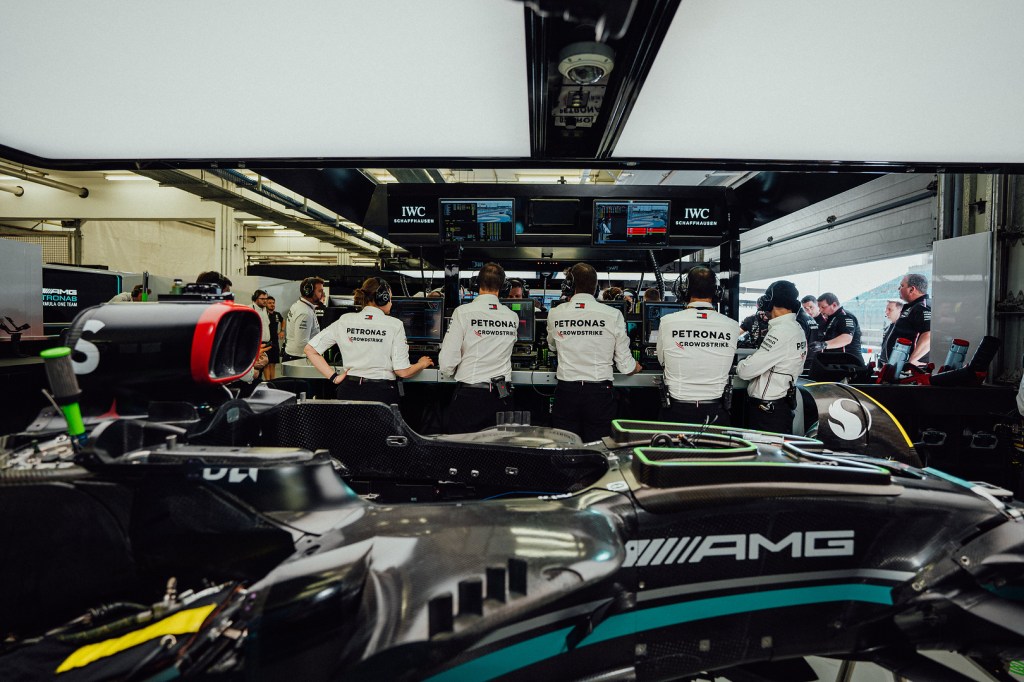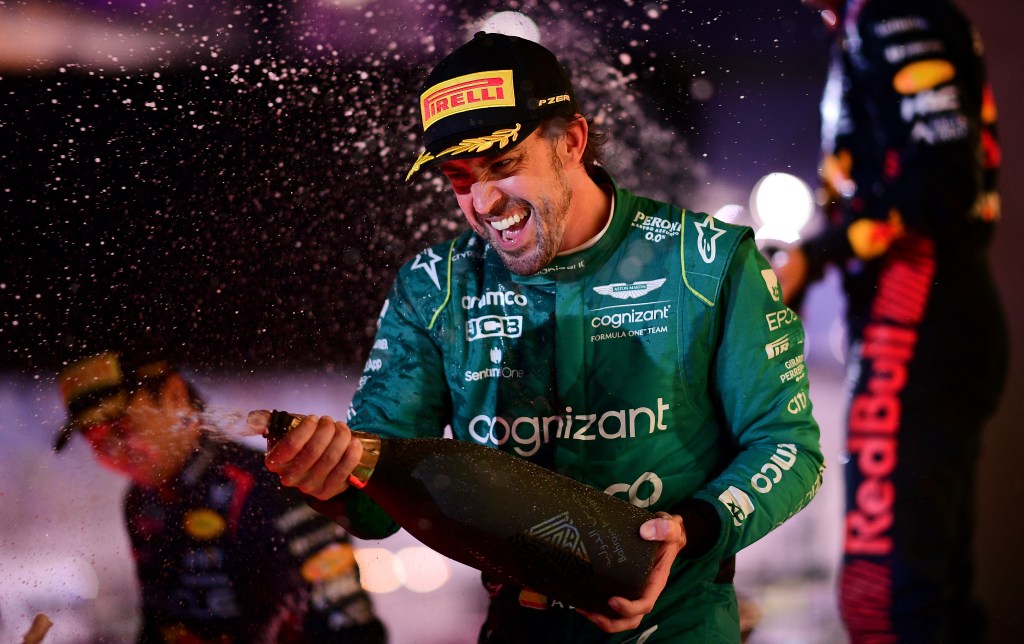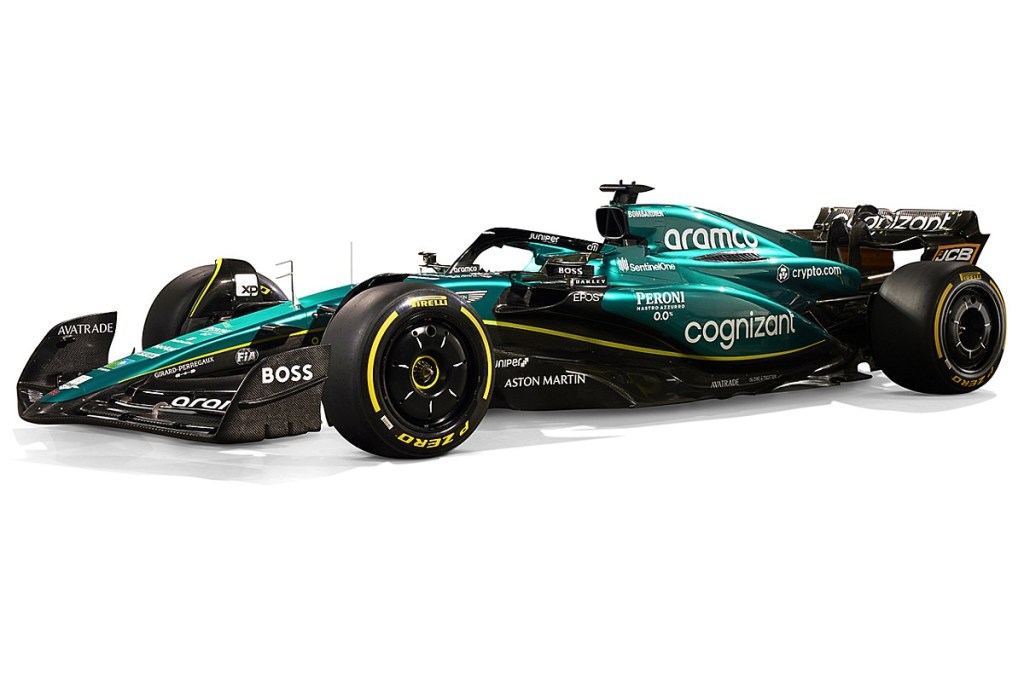Global digital engineering giant Cognizant has teamed up with Formula 1’s 2023 surprise packets.

One of the things about Formula 1 racing that’s a “little bit bonkers”, says Cognizant’s Rob Walker, is the rule limiting how much testing a team can do on the track before a race.
“Can you imagine any other sport, where you can’t train as a team?” asks Walker, Cognizant’s president of global growth markets who is in Australia for this weekend’s Rolex Australian Grand Prix in Melbourne.
And to top that off, he says, they’re limited to how much time they can spend in wind tunnels, how many models they can build (one) and how big those models can be (one third the real thing).
But within those rules designed to level the playing field between the richest and poorest teams, lies an opportunity for the tech guys.
Cognizant – the Jersey-based Fortune 200 digital-engineering firm that employs 355,000 people – has come in as the major sponsor of the new kids on the engine block, Aston Martin.
But Cognizant is tinkering with more than just the naming rights. They’re in on the act of making the cars go faster.
While it’s work in the wind tunnel data is a large part of Cognizant’s role in making the car go faster, the race cars themselves have up to 300 sensors on them feeding back to the engineers in real time. “During a race, each of those sensors are telling you exactly how the car is operating,” says Walker. “You’re dealing with about three terabytes of data that come from the car during one race. And then we will help by analysing that data in real time to look at things like tire degradation, how you need to change the car set up around certain corners.”
Whatever Aston Martin is doing this year, it appears to be working. Having only returned to Formula 1 in 2021 after a 61-year absence, the team is coming second in this year’s constructor’s standings after two races. It’s new lead driver – two-time world champion Fernando Alonso – came third in the first two races. The best the team could manage in the entire 2022 season was three sixths.

Constant rule changes and restrictions make the need for technology ever greater, says Walker. “It’s a very weird setup, but therefore the way that you use data to model and simulate is critical in the way that you pass through changes.
“They might have a model that they think will work at the beginning of the year. By the time we get to the end of the season, the car is completely different. They would change the car three or four times over the length of the season by tweaking, learning to deal with a new set of regulations, which isn’t about how far they can push those. It’s about, how bendy different bits of the car are; how they performed under different terms.
“So a lot of the work we do is helping them flow through that data, using computer models to analyse that flow of data.
“We’re not going to say that we are Formula One aerodynamic engineers, but we have about 40,000 data scientists. We’re pretty good at understanding data.”

Teams are also restricted in how many people they can bring to a race. So all the information gets sent back to the team headquarters at Silverstone in the UK. The Aston Martin engineers there then make decisions which will be relayed back to the people on the ground in Melbourne.
“If you have a look at a Formula 1 steering wheel, it’s got lots of knobs where the driver can change the setup, and often they will change the set up mid-race to get one-tenth of a second per corner. And we’ll then also monitor damage on the car and assess the point that it needs to come in to have something changed.
“So there’s a lot of work that we do, blowing all that data through and then in real time helping the team analyse that data to then make decisions during the rest of the race.

“It’s one of the most complicated set of data decisioning points that any global sport has to deal with.”
Aston Martin’s Formula 1 managing director, commercial and marketing, Jefferson Slack, said the expertise in data, analytics and machine-learning was helping make the cars go faster – and creating a leaner organisation.
“We have Cognizant team members embedded within the team, and we have Cognizant learnings being applied to our wind tunnel and aerodynamics data in ways that are truly game-changing,” Slack said in a written response to Forbes. “I firmly believe that this is the way all sports marketing partnerships should be: true synergies.”
Chief marketing officer at Cognizant, Gaurav Chand emphasised that the deal was not a typical sponsorship, in that Cognizant was not just handing over money. “The ultimate goal is to make that car go faster,” Chand told Forbes. “We’re going above and beyond to talk about how this is not just a sponsorship. This is absolutely and definitely a partnership.”
Walker says he would like to claim that Aston Martin’s turnaround this season has been entirely due to Cognizant’s involved, but recognises that it’s probably got more to do with Alonzo and the key engineers poached from rivals Mercedes and Red Bull in the off season.
“If I had an engineer from Aston Martin on the phone with us now, they would say it’s about 98%, the car that determines the win, and 2% the driver. If a driver was here, he’d tell us it’s about 25% the driver.”
Rob Walker, Cognizant
Walker thinks the 98% number is closer to the truth but that every single fraction of a percentage point is crucial.
“So if you look at the Melbourne grand prix coming up, it’s 5.3km. On a qualification lap they’ll probably do that in one minute 15 seconds, something like that. So on average, they’re covering about 70 meters a second. There are 14 turns on the Melbourne circuit.
“If you set the car up incorrectly, or the driver blinks at the wrong moment, you can lose anywhere from 0.1 to 0.2 seconds on each corner. That’s 100m that you’re losing on one lap. Put that over the length of an entire race, or 58 laps, you realise just how small the margins are. That tenth of a second per corner is the difference between you finishing, potentially third, or 15th.”

Aston Martin Revived
- Aston Martin had a brief fling with Formula 1 in 1959 and 1960 but performed poorly and dropped out after that season.
- Four years later, an Aston Martin DB5 was featured in the James Bond film Goldfinger and has since appeared in six more Bond movies.
- It’s return to the Formula 1 scene began in 2018 when Canadian ragtrader Lawrence Stroll – valued by Forbes at US$3.6 billion – led a consortium of investors who bought the Force India Formula One team.
- The team was renamed Racing Point F1 Team in 2019, but then the following year, Stroll led another consortium which bought 16.7% of the Aston Martin car company for $335 million.
- Racing Point F1 Team was then rebranded as Aston Martin F1 Team in 2021 and reclaimed the British racing green they’d used in 1960 (pictured above).
- The team is forking out $370 million to build a 37,000 square metre factory next to the famed British circuit at Silverstone. The factory will be made up of three interconnected buildings. Building One will house the team’s design, manufacturing, and marketing. Building Two will have staff amenities, the simulator and logistics, while building three will contain a new wind tunnel.


